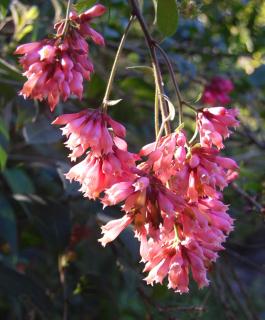

Cestrum blooms in waves from spring to fall.
Key Cestrum facts
Name – Cestrum
Family – Solenaceae (nightshade)
Type – shrub
Height – 3 to 10 feet (1 to 3 m)
Exposure – full sun, part sun
Soil – ordinary
Foliage: deciduous/evergreen (due to climate) – Flowering: end spring → fall
We recommend planting in spring.
Grow it in the ground if the climate is relatively warm. If not, plant in garden boxes with soil mix to bring them indoors in winter.
Propagation is through cuttings in spring on semi-hardened sprigs.
For Cestrum from seed, favor sowing in trays in spring.
It doesn’t need any pruning. However, if you want to control its size or shape, go ahead and prune at the end of winter (make sure the last frost date has passed).
More severe pruning every 3 years will trigger a fresh bout of more vigorous blooming. In addition, branches will grow more dense and lush overall.
 Cestrum uplifts us with a beautiful inflorescence, panicles shaped like umbels.
Cestrum uplifts us with a beautiful inflorescence, panicles shaped like umbels.
It stands apart from other plants thanks to its very agreeable fragrance.
It is an excellent plant to grow in a veranda.
Indeed, it needs heat in summer and a certain amount of coolness in winter, and lots of light.
Cestrum berries are toxic, together with all other plant parts. Handle with care and teach your children and pets not to eat it.
A few elegant types of Cestrum include:
During the blooming phase, add liquid organic fertilizer every two weeks.